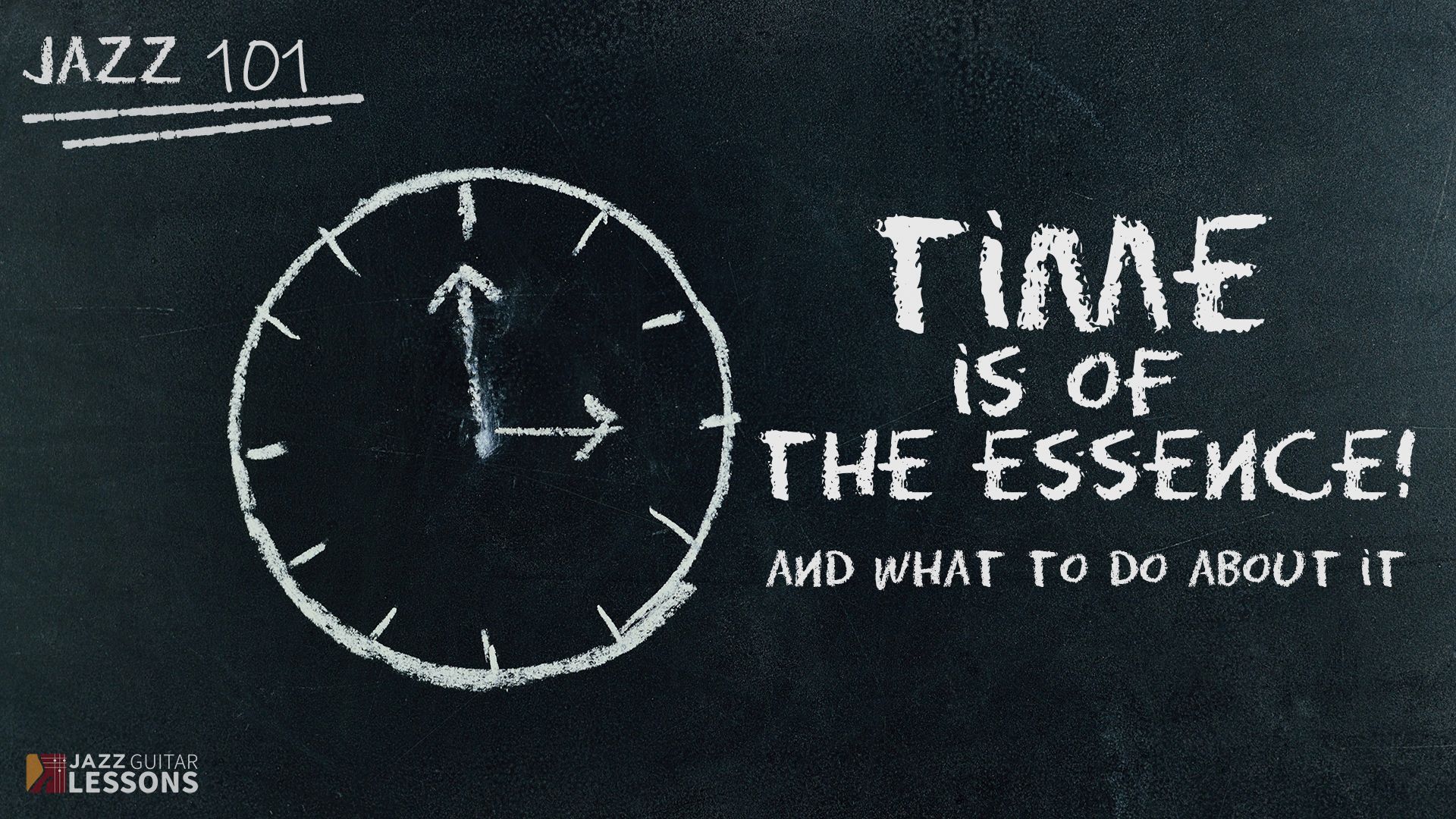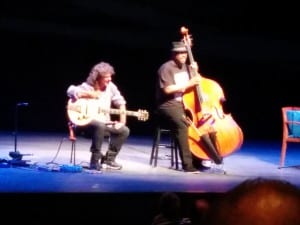
Time is of the Essence and What to Do About it
Jan 12, 2016Ever had that weird feeling when listening to (or playing) jazz improvisation? You know, that thing you can't quite put your finger on. It sounds like jazz, it's all the right notes, all the right chords, and perhaps the song is a standard tune you know well ...
... but the soloing still makes you think "Meh. I'd rather listen to pop songs the radio" ?
Well, me too. And quite often I must admit. My general feeling is that the vast majority of jazz musicians are like encyclopaedias. Their soloing winds up being a display of what they know ... and that doesn't make me feel anything! (Outside of nausea). We must come to terms with it: legendary jazz improvisers are the exception, not the norm.
And on top of that, it seems like amateur jazzers and legendary players all know pretty much the same musical materials and "things". So, I'm suggesting that the sheer amount of knowledge about chords, scales, melodic patterns, licks, chord voicings, songs (etc.) is not the main factor that determines the real "street credentials" in a jazz musician.
And thus, if all an amateur improviser does his "show what he/she knows" while soloing, there's a magical ingredient missing. And to the listener, the music just sounds bad or unappealing. And often times we don't exactly know why.
Get where I'm going?
Yes you do. It's in the title of this post. :-)
What separates the men from the boys really is the strength of an improvisers rhythmic intentions, amongst other things. But I believe that if the time (or drive or groove) goes away, then all else goes at the same time. Interesting, eh? Take Wes Montgomery's licks and play them in a bad timing and you wind up with that feeling I mentioned in the first paragraph.
So the few hundred words above simply led to this: Work on your rhythms, groove and timing issues in all practice sessions like there is now tomorrow! Jealously preserve a songs' pulse and sense of drive like your life depends on it.
If you do that well enough, you decrease the likelihood of a listener going "Meh..." while you solo. Put time first, and your ego second. Simple musical ideas played in a neat groove are golden.
All your wonderful chord voicings and fantastic licks you practiced aren't worth a penny if you can't play them in good swinging rhythms. It doesn't matter of you're not the drummer, bassist or pianist in the band: you're still responsible for holding the time together!
What to do about it?
The mandatory list of tips here. To apply ASAP in your practice, rehearsal or live performances:
- Don't play out of time.
When you practice, in rehearsals, or at gigs. Just refuse to play anything that's not aligned with the grid of the pulse (nine 8th-note to a bar of 4/4 anyone?) - Keep your place in the form
If you keep falling off the wagon (ie. getting lost in the form), you're probably playing too much and not listening enough. You can keep your place better following the next tip. - Subdivide your a** off!
Count while you play. Play while you count. And subdivide the smaller fractions of time (8th-notes, triplets, 16th-notes, depending). All your jazz guitar heroes do it when they solo. Count the big pulse ("one two three four") and the smaller subdivisions ("one ah eh, two ah eh, ..."). I once got asked by a student "When will I be able to stop counting 1-2-3-4 when I'm soloing?" My answer? "When will you be able to take your eyes off the road when you're driving?" - Need a hand with subdivisions?
Use the book Time Awareness by legendary drummer Peter Erskine. - Use the metronome on 2&4
Not as a crutch, but to convince yourself that you can actually follow a static point of reference in time. If you can't follow the metronome, you can't follow the drummer and piano player. Or worst: the bassist! - Use the metronome on 3
To play on faster tempos. Think of the 3 as the backbeat. Or even as the 2&4 of the half tempo. (See the video below) So you can use the metronome at 50 bpm when you want to play a fast swing at 200 bpm. Pretty neat, uh? - Don't rush!
Keep a relaxed approach to soloing and comping. Physically, and mentally. All the best jazz soloists have a laid-back feel to their time. They're still "right on the money", rhythms-wise ... but the lean back on the tempo to create that grooving feeling. Think organ trio with a guitar. Jazz guitarist Pat Metheny is a case in point for playing lines laid-back. - Meditate and just chill out
Read books such as Kenny Werner's Effortless Mastery to keep your body and mind relaxed and aware. I don't believe how liberating it is to play anything on the guitar until your try it for the first time! Then you go ahead and keep that freedom to play (literally) any notes or scales on an easy form, like blues. It simply increases your awareness. And often your heightened awareness shows you just how bad your rhythm feel is when you start soloing. ;-)
Play Fast? No, just subdivide well
Some more inspiration, a recent video covering tips to "play faster". And it's all about keeping your place in time. And of course, some examples on using the metronome on 2&4 and the metronome on 3.
Enjoy! :-)
While you're here, might as well bring out an old friend!
Develop your rhythm with these exercises with a metronome. Check out the video lesson here:
The inspiration for this Post: Pat Metheny One-on-One
Yup. Pat again. Saw him live in duo with Christian McBride (thanks to Scott and Jimmy for the invite and the nice evening!) back in September 2015. Wow! What a player and character.

Long story short: Metheny and McBride opened the evening with Black Orpheus. And Pat took 2-3 choruses all by himself, improvising over the form, as an introduction to the song. And it clicked in my head: even if Pat Metheny plays laid back lines, we still hear the definition of the pulse in his improvisation. And even if he's not comping at all. That's #deep, if you know what I mean.
Until next time! Take care. :-)









